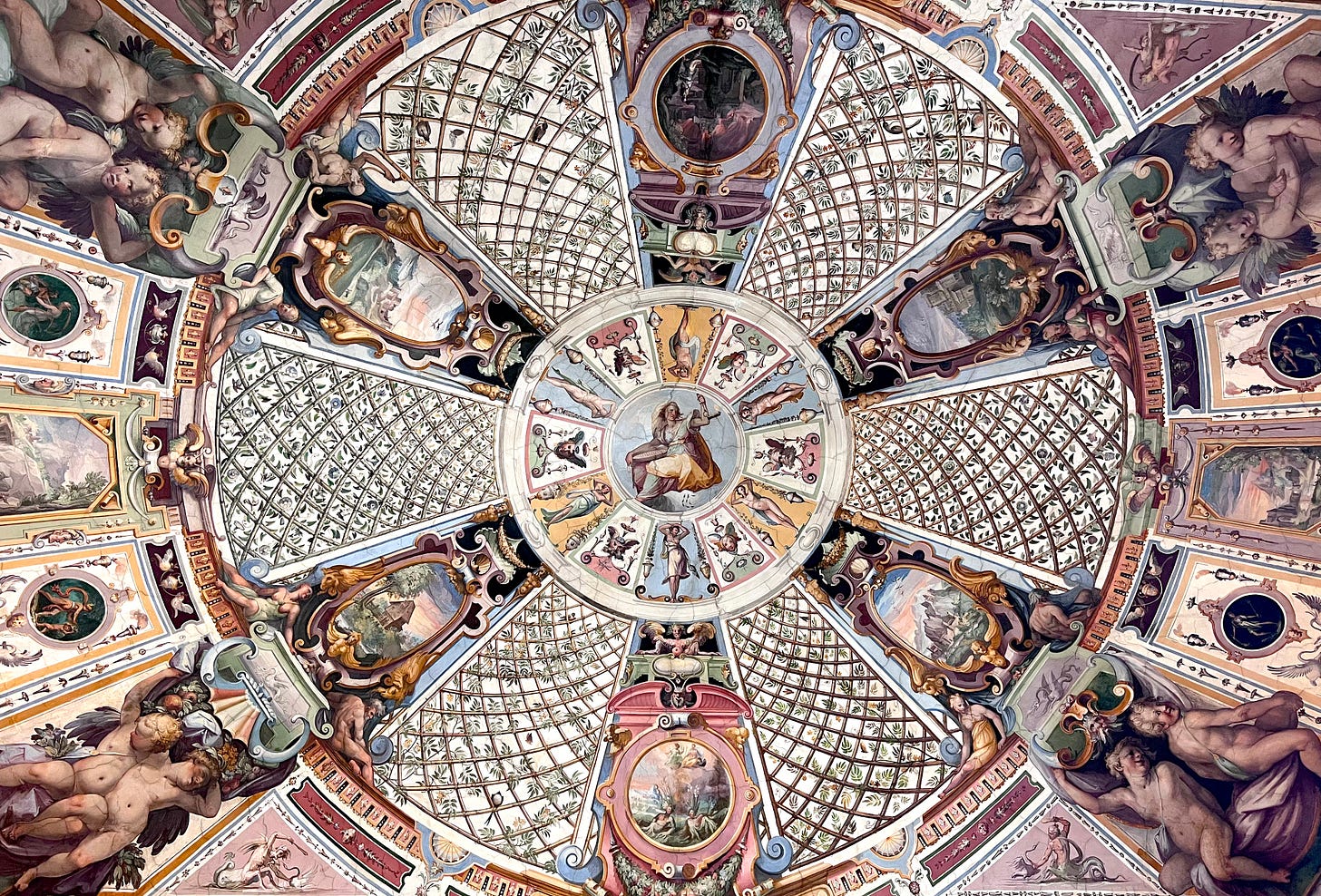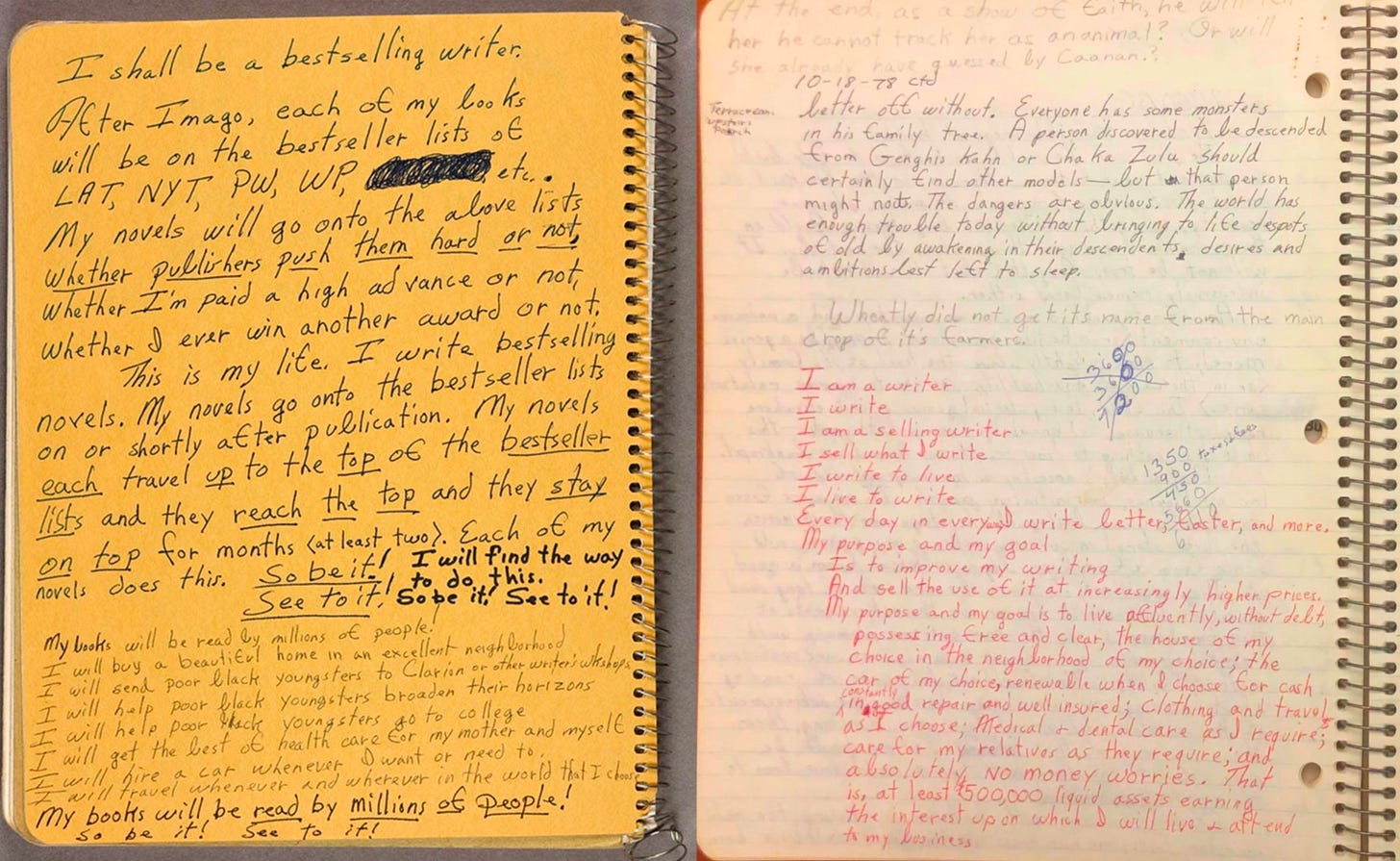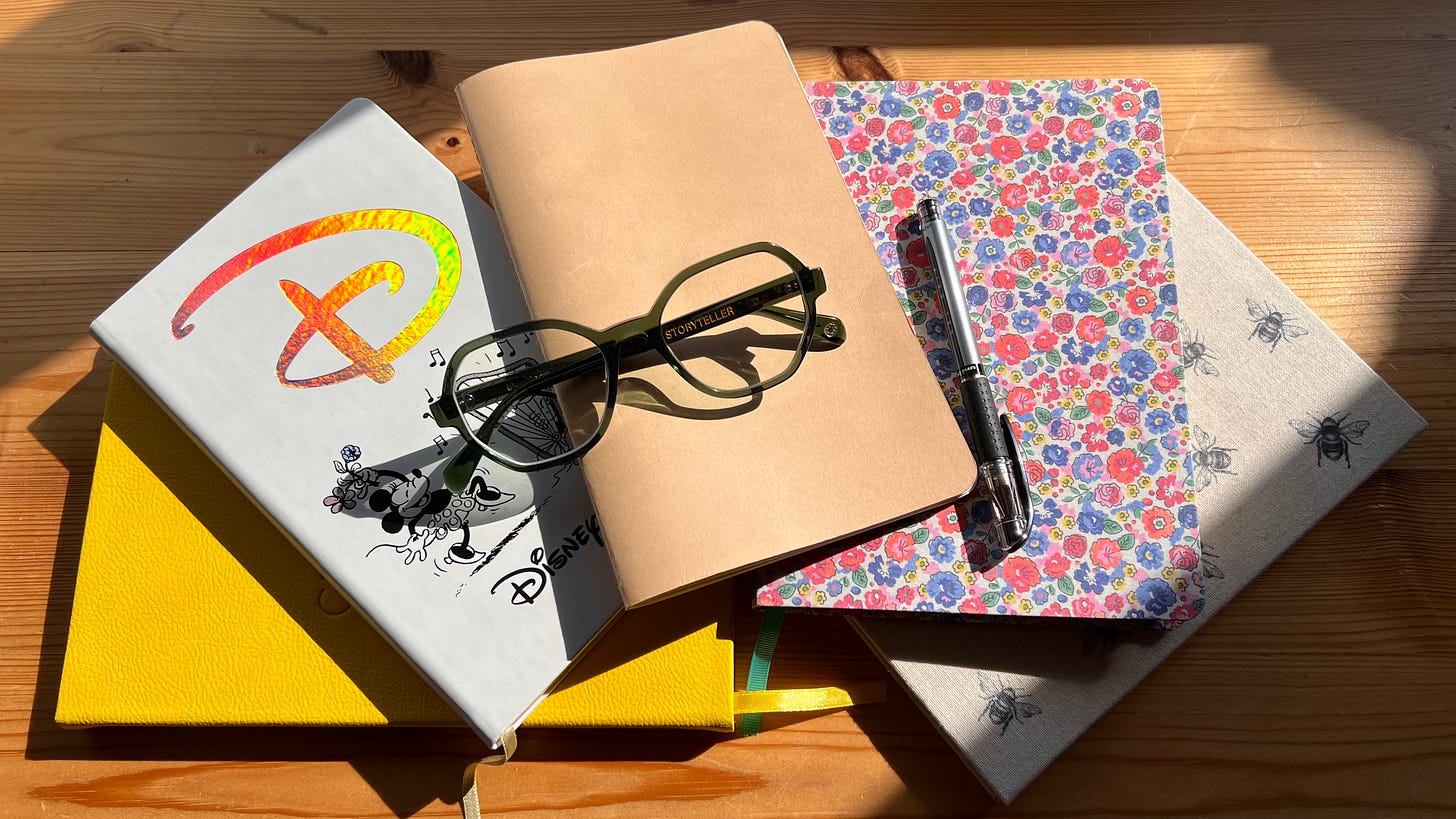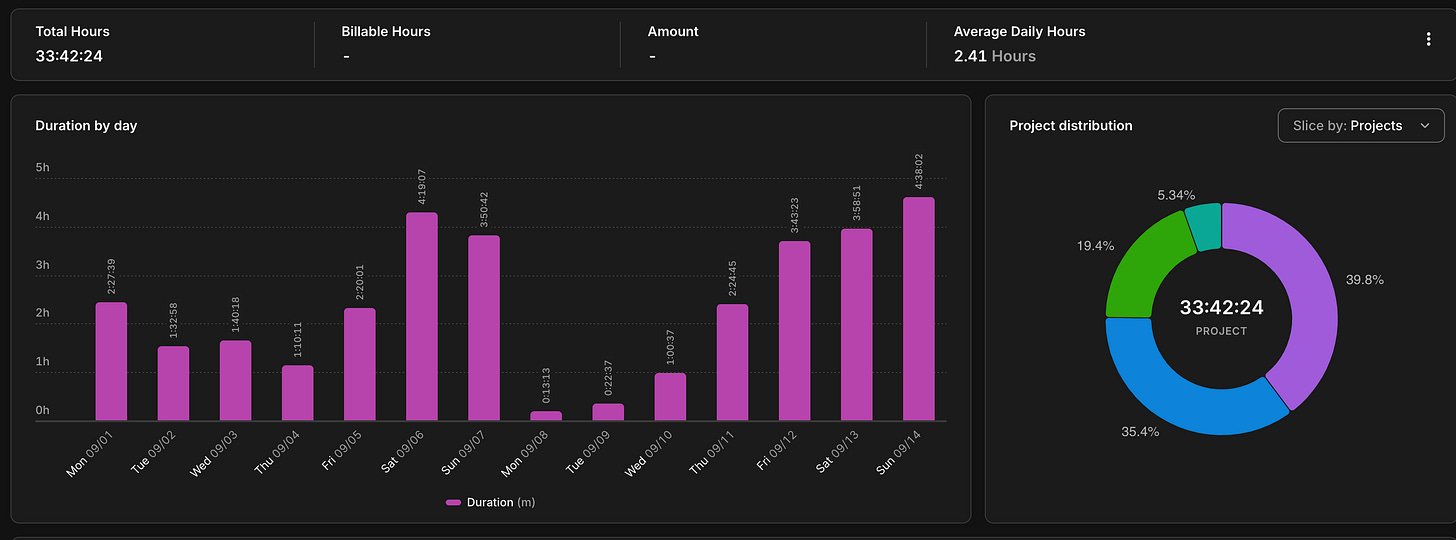How to Manage Multiple Creative Projects at Once
Practical strategies and a helpful mindset for polymaths and multi-passionate creatives.
I recently stumbled upon a term called “Renaissance Man.” According to Wikipedia, it refers to “A Polymath, a person in the archetype of the High Renaissance of broad talents and expertise.” According to Google Gemini, “It is an individual who is knowledgeable, accomplished, and skilled in many different fields of knowledge and activity, including the arts, sciences, and physical pursuits. The term originated from the Renaissance period (roughly 14th–16th centuries), a time characterized by a broad interest in human potential, with figures like Leonardo da Vinci embodying this ideal by excelling in art, science, and engineering.” This made me go, “Hah! That’s probably what I am chasing after—being a Renaissance woman.”
“But isn’t it a struggle to pursue several goals and interests?” one might ask, and it is. But if we could adapt the perspective of “lifelong learning” rather than trying to arrive at a destination, we may spend our lives pursuing several beautiful projects. There will still be some elimination process needed until we decide what projects to work on, but once we focus on a few, it is not unfeasible.
It all started last December when I had a chat with ChatGPT to decide my “thing” in life. After deciding what to work on, I started writing on Substack, and my writing improved a lot. I also started writing my first novel, and have been reading a lot of books, all while working a full-time job. So I’m hoping to explain how we may do it in practice.
I’ll be explaining how I do it in two sections: How to start and set up a system that works, and the helpful mindset. I’ll then wrap up by giving you some practical tools I use.
Hope you find this essay useful!
How to start and set up a system that works
Identify Independent Projects
I think one of the most crucial things is distinguishing the things we just like and the ones we are passionate enough to overcome the difficulties. Once we know our true passions, we should identify the particular thing we want to pursue. Let's say you want to write, but where to start? How do we choose a genre? Is it a novel you want to write? Or creative non-fiction essays for literary magazines? Or maybe a travel blog? Or let’s say you want to paint. Is it watercolor? Charcoal? Acrylic? And how about the subject—do you want to draw nature, or people, or animals? The bottom line is, there are many options in each interest. Knowing the options, analyzing them, and deciding which one to use at the beginning of each project would save you a significant amount of time and energy. I personally used The Whiteboard Method a lot when organizing my creative chaos, which is something I’ve learned from an arts-related vodcast channel, The Draftsmen.
Have Clear Expectations for the Long Term
I recently saw Octavia E. Butler’s notebook where she kept writing, “I shall be a bestseller writer. This is my life. I write best selling novels.”
Call it a prayer if you’d like, or manifestation. In my opinion, having one specific target we put our eyes on decreases the negative effects of distractions along the way; hence, our efforts would be channeled to our goal in a much more efficient way. You may decide to be an Oscar-winning film director, or a globetrotter—it doesn’t matter. Everything is doable; do not settle for something by thinking the peak point of your goal is “unrealistic” for you. We don’t all have to aim for Oscars, Emmys, Nobels—those things are not the only things worth chasing for—but if that’s what you want, I just emphasize that it’s doable. Once you decide where you are heading, “maybe”s wouldn’t occupy your mind and steal your energy.
Have a Priority List
Which one’s more important for you and why, and when may you start? Let’s say you have 3 projects in mind: Studying anthropology by yourself, working on a startup idea with your ex-colleague, and writing a non-fiction book in your expertise field. Then consider your personal life. Will you be moving soon? Are you expecting a baby? Do you have financial priorities? These and similar questions may help you prioritize your projects. One project might be rewarding financially sooner than the others. One project could be more doable during busy times. Or you might simply have more enthusiasm for one project, and working on that one first might fuel your motivation to start the other ones later on. When to start can also be decided based on whether you’d be occupied with something else in your personal life.
Set Goals for Each Project for the Near Future (e.g., 6 months)
Having been working in white-collar corporate jobs for a while, “strategy” and similar themed meetings have become ingrained in my personal life as well. When I was leaving Belstaff, one of my colleagues there on my leaving lunch, asked me, “So, what are you going to do now?” (I left without a job). I said, “I will create the Critical Path of my life.” We laughed. There was a document called “Critical Path” where we had noted the specific dates for the next two years’ interdepartmental meetings such as what designs would be approved, what styles would be produced in which colors, how many units would be produced per item, and so on. I’ve implemented it to my own goals and created a strategy spreadsheet where I’m giving myself goals and checking it every 3 months. Writing down your goal for the foreseeable future pushes you to imagine you are doing it and makes you quickly analyze what is doable. This is the first step for those vague ideas to 'become real.
Create a Schedule
I am a half-planner, half-spontaneous person. I have a rough number of hours in mind I want to spend on each project per week. So, schedule-wise, I am flexible. I use a commonplace notebook to note down what I want to achieve that day and do it without appointing a specific time for it. On Notion, where I track all of my projects, I put a deadline for projects when I want to finish them. It motivates me to keep working on.
Track Progress, Analyze, and Adjust
Every week, I track the main projects I work on using Toggl. At the end of the week, I can easily see how many hours I’ve spent on activities like reading, writing, playing piano, and other projects. While I don’t check this data every week, it's helpful and encouraging to see how the small amounts of time I invest accumulate over the days. Each second feels like a drop falling into a larger bucket. The biggest benefit of this app comes during my quarterly strategy review, where I can see my average weekly time spent on each activity. I analyze the projects and ask myself which ones I enjoy the most, which spark my curiosity, and which ones I didn’t find inspiring. For instance, last quarter, the average time I spent reading per week was 10.4 hours, and for writing articles for Substack, it was 4.8 hours. This quarterly analysis leads me to decide on more effective, realistic, joyful, and spot-on goals for the upcoming quarter.
The Helpful Mindset
It Takes Time, and That's Okay
Accepting “it may take a few months, or for some projects, years” was relieving. As long as you do the work, you are progressing. We should have fun while doing it. This era of rush, wanting to see the results, and the answer to “when is the deadline?” being “The deadline was yesterday!”—one of my previous managers once said this, jokingly, obviously—we miss the present, the moment we’re in. There is no real reason to get things done immediately, and even if there were, rushing things doesn’t help anyway. It takes time, and the journey is beautiful. As venerable Miley Cyrus once said, “Ain't about what's waiting on the other side, It's the climb.”
Giving yourself permission to experiment
I’ve recently listened to a video on YouTube by Big Think featuring Anne Laure Le Cunff. It basically suggests doing tiny experiments rather than trying to adapt a brand new habit for life and getting disappointed if you can’t keep up with it. This was so helpful for me to start exercising again; just by changing the perspective slightly, I realized I can do it. When you experiment, you start it by saying, “I’ll do exercise for 3 days and if I like it, I’ll keep doing it for a certain amount of time,” rather than adopting a strict black-or-white mindset.
Starting, starting, starting.
Done is better than perfect. I’ve read somewhere a story about two friends visiting a contemporary art gallery. When they see a painting, one of them says condescendingly, “I can do this too, easily!” and the other answers, “But who did it, did it.” The point is, “I can do”s don't matter; what spills out of you matters.
Energy Management
Some call this “the flow state.” I believe when we do the right thing at the right time, we are in flow. Rather than fighting an urge, we feel we are where we should be by doing what we should do. Things feel easier when you roll your sleeves and do them, because your body and mind are in sync. I have a method I came up with called “Something in, Something out, Stop & Process,” which simply suggests not doing two brain incomes in a row, or two brain outcomes in a row—keep them in balance, and putting some “off-times” in between inputs and outputs so you may stop and process what is happening. If you’d like to read the full article, please see it here:
Some Practical Tools and Wrapping Up
As mentioned above, I use Toggl to track how much time I spend on each project weekly. I also use Milanote for my virtual moodboards, and Notion for project management of all the things going on in my life, from planning trips to scribbling new English words to my Substack post ideas. I use Google Sheets for my book lists, and every time I see a good book or someone recommends a book, it goes to that sheet. I’m putting the novels into different columns by where the author is from: American, British, Russian, Japanese, and so on.
Overall, once you decide what to work on, once you decide which one to start first, and once you have a goal for what you want to achieve per project for the next 3 months, you may start thinking about how many hours per week you may realistically dedicate to each project. Then you would have a rough plan, and if everything goes well, you’ll start to get results soon. I am a huge believer in creativity, and although we may tend to see our efforts as small at the beginning, they accumulate and lead us somewhere.
The best of the best point of all of this creative urge is, someone out there needs whatever you are going to write, paint, compose, invent, or express. We need art; we need to see our reflection in each other’s art.









